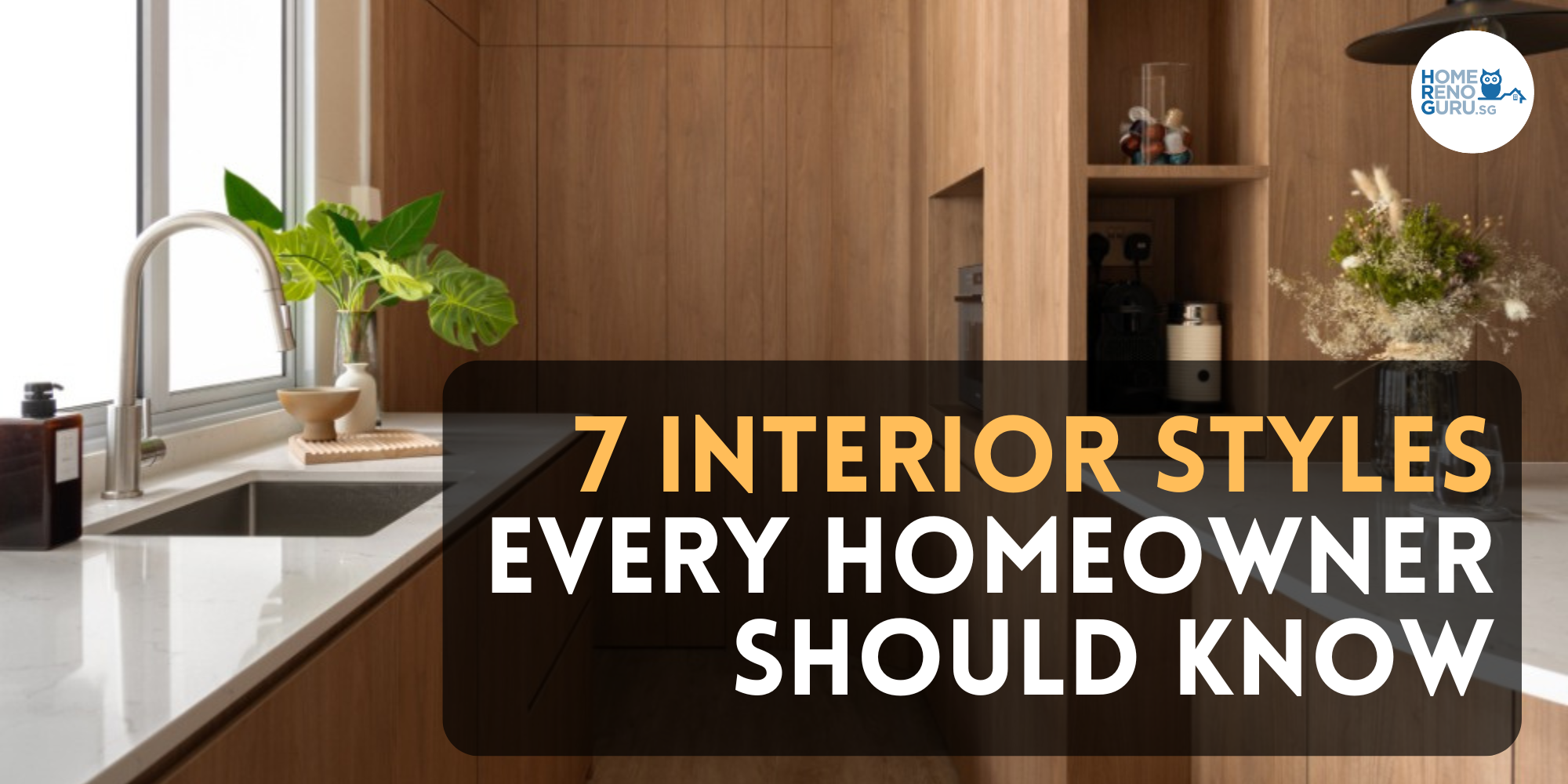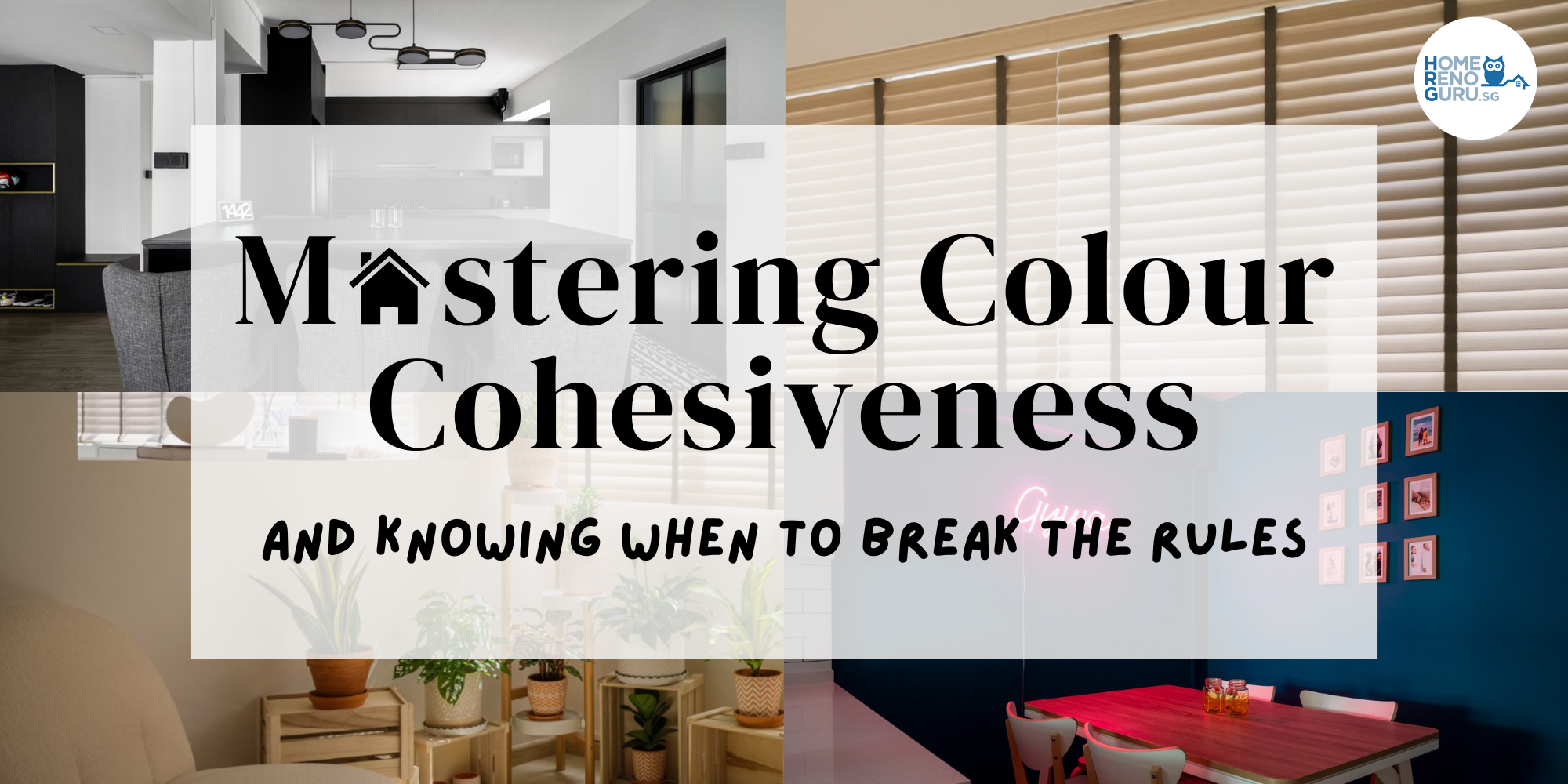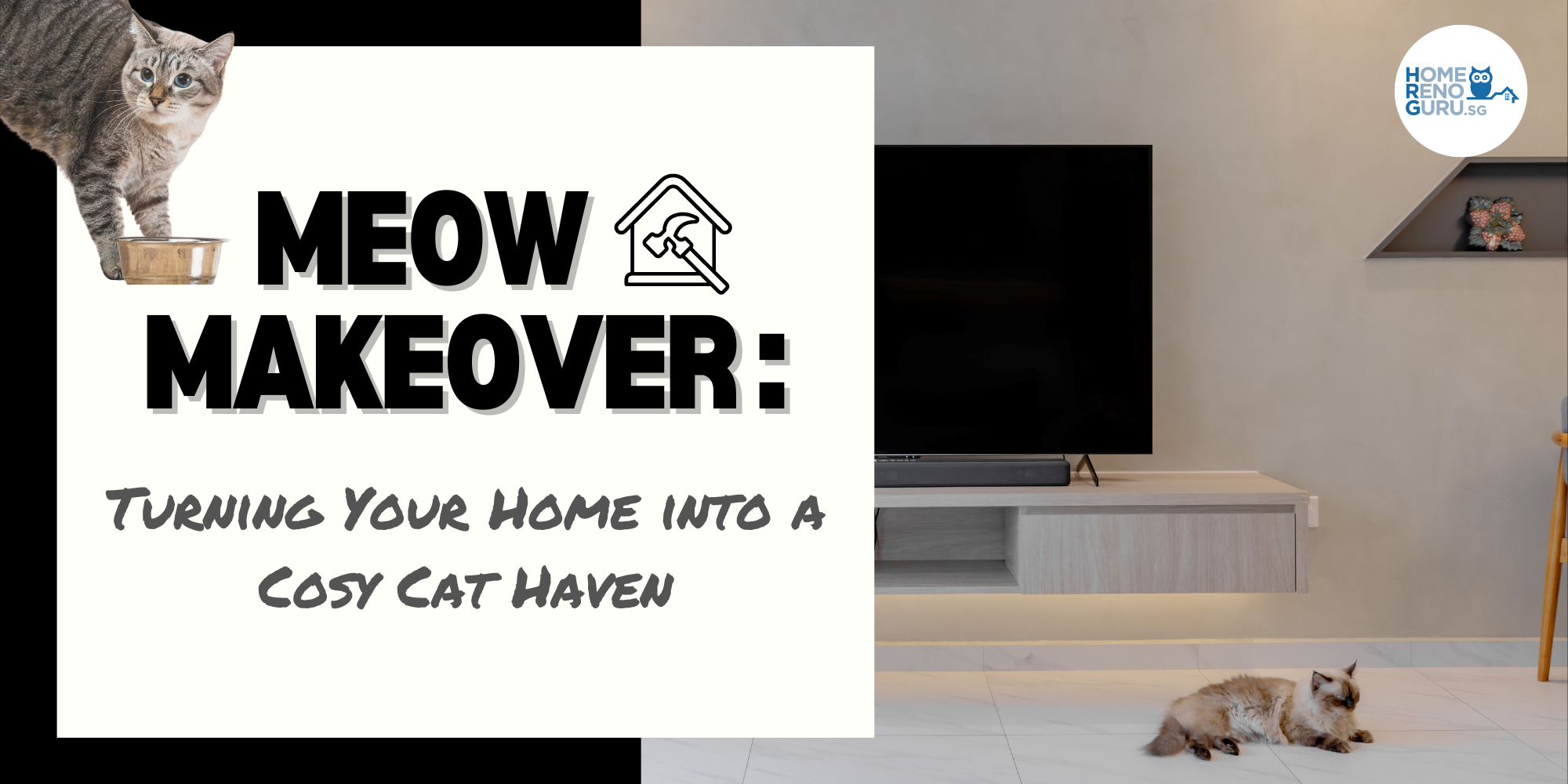Renovation FAQ

We gathered the advice of experts from interior designers and authorities from the building, construction and renovation industries to answer pressing questions in the interior design industry today.
If you have a question you'd like answered, please email it to enquiries@homerenoguru.sg, together with your name, title, company and mobile number
Wrinkling can occur if the paint coat is too thick, especially for oil-based paints. Painting during hot weather causes the paint film to dry faster for the top coat than on the bottom, which can lead to wrinkling. Painting over a contaminated surface e.g. dirt or wax, may also lead to this condition.
Make sure the area is clean and free of any contamination or loose paint film. Allow ample time to let each coat dry before painting the next coat. Always use top quality paint and pair with the recommended sealer for optimal performance.
Overlaying tiles with timber veneer or laminate saves a lot of mess, noise, time and money. However, if you are laying tiles or laminate in a kitchen or bathroom, check on the age of the waterproofing membrane under the existing tiles. If it is nearing the end of its warranty period, it could pose a costly problem in the future.
Any water seepage or leaking would require hacking through two layers of flooring to remove and relay or repair the waterproofing membrane. Otherwise, overlaying makes a lot of sense. The floor will b a little higher, or your ceiling will be a little lower, depending on which way you look at it, but otherwise there is no perceptible difference between original and overlaid flooring.
Ideally, you should apply one coat of sealer in a grey colour before applying two to three coats of your top coat. Nippon Paint ExpressKote and Odourless 5101 water-based sealers, as well as Nippon Paint Vinilex 5170 oil-based sealer, are all excellent choices.
Yes – the importance of applying a sealer cannot be overstated. A sealer ensures better adhesion between the top coat and the wall.
If you take a typical HDB flat room’s dimensions, applying a single colour on all four walls, you would need 5 litres of paint for two coats. A good guide for estimation is 1 litre per wall. For a wall that has fixtures and windows, you will need less than that.
It takes two weeks for newly applied paint film to be fully cured or dried. Should you paste any item on the wall within two weeks of painting, such as wall decals or even Blue-Tack for hanging posters, there will be a higher chance of the paint film coming off when you remove the item from the wall.
It takes around two to three hours for a water-based sealer to dry, compared to five to six hours for an oil-based sealer. For top coats such as Nippon Paint Odourless All in 1, it will take around two to three hours per coat to dry. On rainy and cold days, the drying time will be longer.
Always factor in the possibility of bad weather, and allow ample drying time before moving on to painting other wall fixtures.
Anything’s possible, but it’s not necessarily advisable to splash all the colours of the rainbow around a single room. It’s generally acceptable to combine two colours for walls, a lighter colour for the main colour and a darker colour for a feature wall, plus one or two accent colours for details like skirting, doors and cornices.
When you have too many colours in one space, the room will feel unplesantly busy and ‘noisy’. You should always eliminate colours until you feel a sense of balance. Pay particular attention to where your accent colour or colours are used, making sure that they are evenly placed to carry the eye around the room.
The easiest way is to overlay cement screed floors is with another flooring material – wood veneer, laminate, vinyl or homogenous tiles, to name a few. You can also apply a heavy-duty epoxy paint directly onto your cement floor, though colours are limited (since they are usually used in warehouses, factories and car parks).
Another way to conceal the floor is to throw a luxe rug over it, for an ironic contrast of raw and refined, gritty and glitzy.
When choosing the type of wall finishing, you should always consider not only the initial installation cost but also subsequent maintenance costs. While you can buy relatively cheap brands of wallpaper, the maintenance post-application may be taxing as the wallpaper may peel (due to our humid weather). To keep the overall cost low and add uniqueness to your clients’ homes, you can consider exploring Nippon Paint Momento.
This special effects paint allows you to recreate intricate works of Italian craftsmanship in your home, imparting a distinctive wallpaper-look effect that turns ordinary walls into extraordinary masterpieces. Formulated with low VOC, it is free from formaldehyde and contains no lead or mercury. Four top coat finishes multiply the possibilities for customisation. Choose from: Momento Elegant, for a stylish and luxurious ambience; Momento Pearl, in Sparkle Silver and Sparkle Gold, to add a dash of glitz with a sparkling effect; Momento Frost, in Snow, Pearl and Gold, which is inspired by a crisp winter’s day; and Momento Cloud, in Pearl or Gold, which comes with a subtle lustre and complements most popular colours.
The application of Momento is easy – simply apply criss-cross strokes of the paint onto the wall to create the depth of the texture. Variations in manual application techniques create further opportunities for customisation, so that no two walls are alike. Look out for the new Momento designer series that will be introduced in late 2015. It will offer inspiring options such as Velvet, Travertino, Rustbox and Optical, which allow you to create a velvety finish, a 3D textured brick wall effect, a vintage touch of shimmer and a metallic effect.
When issues like this arise, you can always find out which area of the house each of them dominates, and design the respective spaces accordingly. If the wife rules the kitchen, she chooses the décor. If hubby hangs out in the living room, let him have his way there.
However, the flow from one room to another will be inevitably compromised. Another way is to use light colours and light wooden furniture, as a nod to Scandinavian design, then add cosiness by introducing accessories such as throw rugs, cushions, clustered picture frames, and so on.
Firstly, ensure that there is sufficient space for elderly folk to move around freely, without obstructions hampering their movement. You should also factor in possible future usage of wheelchairs, allowing adequate space for wheelchair access in the bathroom, and make sure toiletries, toilet papers and clothing are within reach.
Toilet seat risers are also useful for the elderly, since they reduce the amount of strength required to stand up after sitting and provide a cushioned, comfortable seat when natural padding is lacking. Shower chairs can reduce the risk of falling in the toilet. Non-slip tiles should be used in all wet areas, not only for the sake of preventing falls among the elderly but for the general safety of all occupants. You could also take away the kerbs in the bathroom and create a gentle slope for wheelchair accessibility.
HDB offers a subsidised home improvement package specially for the elderly, called EASE. More information is available at http://www.hdb.gov.sg/cs/infoweb/residential/living-in-an-hdb-flat/for-our-seniors/ease
Black granite is a good choice to complement existing material that is no longer available, as it is a neutral colour that can match most countertops. It is also sometimes possible to install new sheet laminate over an old countertop to conceal the previous material.
However, this is not the best option, as underlying problems may sabotage you later. The best option is simply to remove the old and start anew.
There is a multitude of window dressing options available for your client. Louvre blinds are a good choice for work and living spaces, as they look sharp and linear, which projects a professional image. Neutral blinds also look good amid a minimalist contemporary theme.
However, it is equally true that a relatively empty, neutral space can be brilliantly enlivened with one carefully chosen element in a bold print, like blinds. For a shot of glamour, you could also consider metallic curtains.
The easiest way to ensure some privacy for a maid who is sharing a room is to invest in a screen or partition, or hang a curtain to section off a portion of the room. A telescopic curtain rod that is wedged between two walls is a low-cost and impermanent option. You could also consider installing a curved railing around your maid’s bed, similar to the way that hospital wards ensure privacy for individual patients.
If the room is large enough, a tall wardrobe or a bookshelf placed at right angles to the wall can serve as a room divider to separate the spaces. If one wall accommodates two beds end to end, a simple way to do the trick is to buy two beds with tall headboards, and place the headboards back to back so that the occupants face away from each other.
Most definitely the answer is yes. A good interior designer should gently educate a client on the transience of trends. Instead of adopting a trend wholesale, you should suggest ways in which the homeowner can incorporate elements of a trend without committing exclusively to it.
The industrial chic fad that is now considered passé by almost the entire interior design fraternity is a good example. If the trend entails mainly superficial features such as wallpaper or paint colour, it’s not such a serious matter or potential costly blunder.
However, if the trend requires structural work to execute, point out the costly aftermath of, for example, having to reinstate hacked walls or remove ceiling cornices and fake Corinthian columns. If the client still insists, then graciously accede to his wishes.
The answer is yes – and no. Property agents often remark that buyers favour ‘neutral shells’ of homes to which they can apply their own personal style. Then again, if a distinctive rainbow-hued home finds the right buyer with a creative mindset, it could be the bright colours that strike a common chord.
Fortunately, colour is one of the easiest and least costly things to change, so the real answer is – if you are selling, test the market and defer your decision to repaint until you get feedback from your property agent.
The answer is yes, assuming the owner has his heart set on it and is aware of the responsibilities that accompany an indoor garden. The psychological benefits of having greenery indoors, and its positive impact on air quality, are undisputed. There are many fully automated self-watering plant systems on the market these days.
And for those with brown thumbs, you can always recommend a planter shelf that accommodates several potted plants and facilitates easy replacement if one or two should fail to take to their surroundings. For those lucky people for whom money is not an issue, you can suggest renting plants.
There are several nurseries that offer this service, complete with maintenance visits and replacement plants in the event that the original ones fail to flourish. For a low-maintenance option, suggest a terrarium.
Talk, talk and talk again. Ask questions that lead to a plan by a process of elimination. Start by assessing the client’s current living arrangements. Ask him what he loves and hates about them. Then move onto colours – ask which ones he loves and hates.
Along the way, try and ascertain if there is a piece of furniture or personal possession, perhaps something of sentimental value, that might form the centre-piece or design inspiration for a theme.
After talking, look. View websites and flick through magazines together. Take a note of what draws a positive response, and show further examples of that look. You’ll get there.
Obviously, white visually enlarges a space by making a low ceiling look higher. However, it is always okay to break the rules if you have a good reason to do so. For example, take a very small room with a very high ceiling. Painting the ceiling a darker colour will actually create the illusion of ‘pushing’ the walls further apart.
Some expensive restaurant owners opt for dark ceilings to create a secluded, sexy vibe. The same can work for a living room or a bedroom. Then again, some adventurous homeowners have taken a leaf out of Michelangelo’s notebook and painted ceiling murals. At the end of the day, it’s only paint.
In a word – very! Failure to apply a sealer can result in a number of paint defects including pores and hairline cracks, flaking and peeling paint, and efflorescence, which resembles chalk or a powdery white substance that collects on the painted surface. This is actually the result of water migrating from deep within the substrate to the surface. In other words – always apply a sealer before painting, or risk unhappy customers and costly rectification works.
A word of caution – if your ceiling was installed before the 80s, have it checked by an asbestos removal expert. If it hails from more recent times, go ahead and remove it yourself.
Invest in a backpack-style sprayer to drench the ceiling. Leave the water on for about 30 minutes to soak. Then using a scraper or putty knife, dislodge it. It should fall off in chunks. It will be messy, so make sure to use drop sheets to catch the debris and protect your flooring and furniture.
There is a whole range of cooling devices that fall under the category of misting devices. They include misting systems and misting fans, and are based on the principle of evaporative cooling. All involve some kind of nozzle or spray that emits fine droplets of water which, on contact with warm air, evaporate and cool the environment. Patio misting system kits are available online and are not too difficult to install.
If your client is emphatic, there’s nothing much you can do other than pointing out the perils of exposed bathrooms, including bouts of gastric and flatulence… Seriously, though, this trend is subsiding and can be mainly found in boutique hotels. You could always suggest a partition with frosted or sand-blasted glass, to retain a modicum of modesty while affording a glimpse of a sexy silhouette.
A common problem with many kitchens is the lighting, or rather a lack of it. Brightening up the lightening will add a cheerier vibe and make working much more pleasant, not to mention safer.
Other mini-upgrades include creating a feature cabinet to show off designer or vintage tableware – just replace one cabinet door with frosted or textured glass. You can also consider changing the knobs on drawers and cabinets, and installing a vibrant backsplash in tiles or tempered glass.
A hanging rack for pots, pans and utensils is a great eye-catching space- and time-saver. Likewise, a spice rack looks great and makes cooking so much easier.
Theses small things can make a big impression.
It’s been said a million times, but we’ll say it again – nothing updates a room like a coat of paint. Other than that, you can suggest inexpensive wall decals or a ‘soft makeover’ that involves a change of window dressing, curtains and floor rug.
Another way to update a room is to remove everything and add items selectively from other rooms. Many home-owners are surprised to see how great their furniture looks when it’s rearranged.
In general, less is more. Choose one focal point and build around it. In the absence of a focal point, a large potted plant in a statement pot will do the job nicely.
Consider using marble as an accent on vertical surfaces rather than the far more likely to be abused horizontal ones. Marble can work beautifully as an elegant backsplash, or as facing for an island workbench, breakfast bar or feature wall.
Generally, yes. While some water filters connect directly to faucets, others must be connected to the main water line under the sink. If you plan ahead, you can conceal the piping that leads to the countertop dispenser rather than have it exposed and covered with casing.
It comes down to a matter of personal preference. Handle-free cabinets hark back to the minimalist style of Bauhaus design, popularised in the 20s. The main benefits are those of visual simplicity and practical hygiene. No handles means less contact with cabinet doors and drawers, thus reducing smudges and stains.
Of course, handles, like everything, are subject to wear and tear. Opting for no handles means one less thing to worry about replacing with a perfect match when it drops off or gets chipped. On the other hand, handles are a way to add personality to an otherwise cookie-cutter kitchen. Get a handle on your client’s design brief and the answer will present itself.
We suggest you sacrifice one side of the built-in wardrobe and convert it into open shelving. On the bottom shelf, extend the area and sides outwards and place a washable mattress. It’s a dog owner’s dream come true, and sweet dreams guaranteed for the pampered pooch.
In a word – hooks. Okay, in two words – hooks and clamps. There are a number of adjustable wall-mounted hooks that can bear very heavy loads. Some come in rack form, others are individually mounted with screws or adhesive backing. They can handle everything from mops and brooms to entire bikes.
Think of wall space as vertical storage space waiting to be filled. Check online or at your local hardware store and you’ll find an explosion of products.
A classic black and white colour scheme always works well. Black and white chequered tiles and white walls are a nod to our colonial past, and can accommodate accent colours in any hue, from pastel to neon-bright.
Many couples are choosing to convert a second bedroom to a luxuriously spacious walk-in wardrobe. Apart from converting an adjoining bedroom, you can also consider sectioning off one end of the master bedroom with a floor-to-ceiling curtain.
Another option is to build a partition behind your bed, like an extended bedhead, with access via both ends – ideal for quarrel-free couples hoping to avoid head-on collisions!
With the advent of industrial chic and ‘factory fashion’, the trend is not to conceal, but to reveal. In fact, many modern owners are drawing attention to their exposed copper piping by leaving it unpainted and painting their electrical trunking in contrasting colours to their walls in order to make it stand out rather than blend in. You can also wrap artificial plants around your exposed pipes, or wrap them in nautical rope. If you’re still not convinced, simply paint them the same shade as your walls and ceilings, in a paint specially formulated for metal.
Artificial grass on balconies has been trending for a while now. You can also consider mounting a series of containers such as earthenware pots and metal pails on walls, and placing pot plants inside them. Green walls, though not exactly new, are becoming more sophisticated, with automated irrigation and fertilisation systems that make them almost maintenance-free.
Though it’s nothing new, and seems almost too obvious to state, potted plants that are tall and narrow work best. Favourites are mother-in-law’s tongue and anything that can be trained to grow up a trellis. When space is really tight, terrariums will always work!
Major flooring specialists can offer bespoke digitally printed laminate and vinyl flooring. It is now possible to get a graphic pattern or even photographs printed on an overlay of decorative paper, which is then bonded with the base material under high pressure and sealed with a topcoat. However, the statement is something the homeowner will be leaving with for years to come. Factors that should be considered are the possibility of novelty giving way to fatigue – and the difficulties of replacing individual sections of the flooring in the event of damage. However, if your client is game, go for it.
Other possibilities to consider are mixing concrete with wood. You can also mix things up by using wood-lookalike vinyl tiles or engineered wood tiles in different shades and laying them in a herringbone or brick pattern.
The general rule of thumb is to embrace the slanted ceiling and make a feature of it. Slanted ceilings often have beams for support. Don’t try and camouflage them – paint them in a contrasting colour that draws attention to the soaring angles of the slanted or vaulted ceiling. If budget permits, add a skylight to admit natural sunlight.
These days, you can get skylights with electronic shutters, but they come with quite a price tag. The highest point of the ceiling is also a perfect place to hang mobiles or hanging baskets of pot plants at varying heights. Consider building in storage to make the most of floor space where the ceiling height is too low for standing.
Many cooks swear by deep drawers for ease of visibility and access. Just slide them out and you have an overview of what’s inside. Cabinets, on the other hand, can turn into black holes where forgotten items gather dust for years, especially in the distant corners of L-shaped formation. You could always consider a mixture of both. Wall-mounted cabinets do come in handy for utilising wall space, and can be useful for storing seldom-used appliances, tall vases and so on.
I assume you have cautioned her against the ‘claustrophobic’ effect of having a loud pattern on all four walls, which can make the room feel as if it is caving in on you. A single feature wall is a safer bet. You can also paint the lower half of the wall and paper the upper, separated by wooden beading, and vice versa.
Some deeply embossed wallpapers emulate pressed metal – these can be applied below a line of wooden beading in a hallway, like a wainscot, with paint above. Instead of wallpaper, you can also suggest special effects paint, which gives a wallpaper-like effect by combining colour and a wide range of textures from metallic and pearlescent to even mineral-inspired marble-like patterns. The market leader is Momento Special Effects Paint by Nippon Paint.






